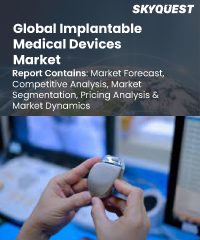
Report ID: SQMIG35A2510

Report ID:
SQMIG35A2510 |
Region:
Global |
Published Date: September, 2024
Pages:
165
|
Tables:
130 |
Figures:
77
North America dominates the global implantable medical devices market due to several key factors, including advanced healthcare infrastructure, significant investment in research and development, and a high prevalence of chronic diseases. There exists a strong regulatory environment in the region that stimulates creativity and facilitates rapid review processes for new products. Moreover, there is a viable healthcare system and a growing number of elderly people that create a need for implantable devices. Added healthcare costs, together with rising concern by patients about available treatment options and the rise in medical technological innovations, reinforces the stand of the north region as the market leader, creating an avenue for the innovation and use of implantable medical devices.
With rapid urbanization, a huge and elderly populace and rising disposable incomes, the Asia Pacific region has become the most lucrative for global implantable medical devices market. Chronic degenerative conditions such as steadily being on the increase diabetes and other cardiovascular diseases are boosting the need for better medical services. In addition, the enhancement of healthcare systems and the availability of advanced technologies are promoting the inventive approaches and use of implanted devices. Dedicated Government policies towards improving delivery in healthcare and boosting medical device production are also aiding the expansion of the market. As such, the Asia Pacific region is on the rise and able to attract investments in the field of research for the development of implantable medical devices.
Our industry expert will work with you to provide you with customized data in a short amount of time.
REQUEST FREE CUSTOMIZATIONWant to customize this report? This report can be personalized according to your needs. Our analysts and industry experts will work directly with you to understand your requirements and provide you with customized data in a short amount of time. We offer $1000 worth of FREE customization at the time of purchase.

Report ID: SQMIG35A2510